The Influence of Hydrogen Bonding in Wood and Its Modification Methods: A Review
- PMID: 40808112
- PMCID: PMC12349351
- DOI: 10.3390/polym17152064
The Influence of Hydrogen Bonding in Wood and Its Modification Methods: A Review
Abstract
Construction wood has a high economic value, and its construction waste also has multiple consumption values. Natural wood has many advantages, such as thermal, environmental, and esthetic properties; however, wood sourced from artificial fast-growing forests is found to be deficient in mechanical strength. This shortcoming makes it less competitive in certain applications, leading many markets to remain dominated by non-renewable materials. To address this issue, various modification methods have been explored, with a focus on enhancing the plasticity and strength of wood. Studies have shown that hydrogen bonds in the internal structure of wood have a significant impact on its operational performance. Whether it is organic modification, inorganic modification, or a combination thereof, these methods will lead to a change in the shape of the hydrogen bond network between the components of the wood or will affect the process of its breaking and recombination, while increasing the formation of hydrogen bonds and related molecular synergistic effects and improving the overall operational performance of the wood. These modification methods not only increase productivity and meet the needs of efficient use and sustainable environmental protection but also elevate the wood industry to a higher level of technological advancement. This paper reviews the role of hydrogen bonding in wood modification, summarizes the mechanisms by which organic, inorganic, and composite modification methods regulate hydrogen bond networks, discusses their impacts on wood mechanical properties, dimensional stability, and environmental sustainability, and provides an important resource for future research and development.
Keywords: hydrogen bond; organic modification; synergistic enhancement; wood.
Conflict of interest statement
The authors declare that they have no known competing financial interests or personal relationships that could have appeared to influence the work reported in this paper.
Figures
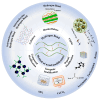

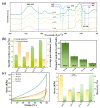

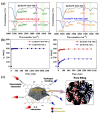
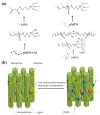
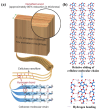
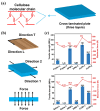
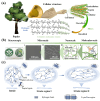




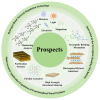
Similar articles
-
Prescription of Controlled Substances: Benefits and Risks.2025 Jul 6. In: StatPearls [Internet]. Treasure Island (FL): StatPearls Publishing; 2025 Jan–. 2025 Jul 6. In: StatPearls [Internet]. Treasure Island (FL): StatPearls Publishing; 2025 Jan–. PMID: 30726003 Free Books & Documents.
-
Wood Waste Valorization and Classification Approaches: A systematic review.Open Res Eur. 2025 May 6;5:5. doi: 10.12688/openreseurope.18862.2. eCollection 2025. Open Res Eur. 2025. PMID: 40438563 Free PMC article.
-
[Volume and health outcomes: evidence from systematic reviews and from evaluation of Italian hospital data].Epidemiol Prev. 2013 Mar-Jun;37(2-3 Suppl 2):1-100. Epidemiol Prev. 2013. PMID: 23851286 Italian.
-
Short-Term Memory Impairment.2024 Jun 8. In: StatPearls [Internet]. Treasure Island (FL): StatPearls Publishing; 2025 Jan–. 2024 Jun 8. In: StatPearls [Internet]. Treasure Island (FL): StatPearls Publishing; 2025 Jan–. PMID: 31424720 Free Books & Documents.
-
Management of urinary stones by experts in stone disease (ESD 2025).Arch Ital Urol Androl. 2025 Jun 30;97(2):14085. doi: 10.4081/aiua.2025.14085. Epub 2025 Jun 30. Arch Ital Urol Androl. 2025. PMID: 40583613 Review.
References
-
- Ramage M.H., Burridge H., Busse-Wicher M., Fereday G., Reynolds T., Shah D.U., Wu G., Yu L., Fleming P., Densley-Tingley D., et al. The wood from the trees: The use of timber in construction. Renew. Sustain. Energy Rev. 2017;68:333–359. doi: 10.1016/j.rser.2016.09.107. - DOI
-
- Ritchie H. Drivers of Deforestation. Our World in Data. 2021. [(accessed on 1 October 2024)]. Available online: https://ourworldindata.org/drivers-of-deforestation?utm_source=Rambler&u....
-
- Hill C.A.S. Wood Modification. Wiley; Hoboken, NJ, USA: 2006. Modifying the Properties of Wood; pp. 19–44.
-
- Hill C.A.S. Wood Modification. Wiley; Hoboken, NJ, USA: 2006. The Use of Timber in the Twenty-first Century; pp. 1–18.
-
- Hill C., Hughes M., Gudsell D. Environmental Impact of Wood Modification. Coatings. 2021;11:366. doi: 10.3390/coatings11030366. - DOI
Publication types
Grants and funding
- 32301518/National Natural Science Foundation of China
- 23KJB220003/The Natural Science Foundation of the Jiangsu Higher Education Institutions of China
- SJCX25_0436/Postgraduate Research & Practice Innovation Program of Jiangsu Province
- 202410298110Y/2024 College Students' Innovative Entrepreneurial Training Plan Program from Jiangsu Province
LinkOut - more resources
Full Text Sources

